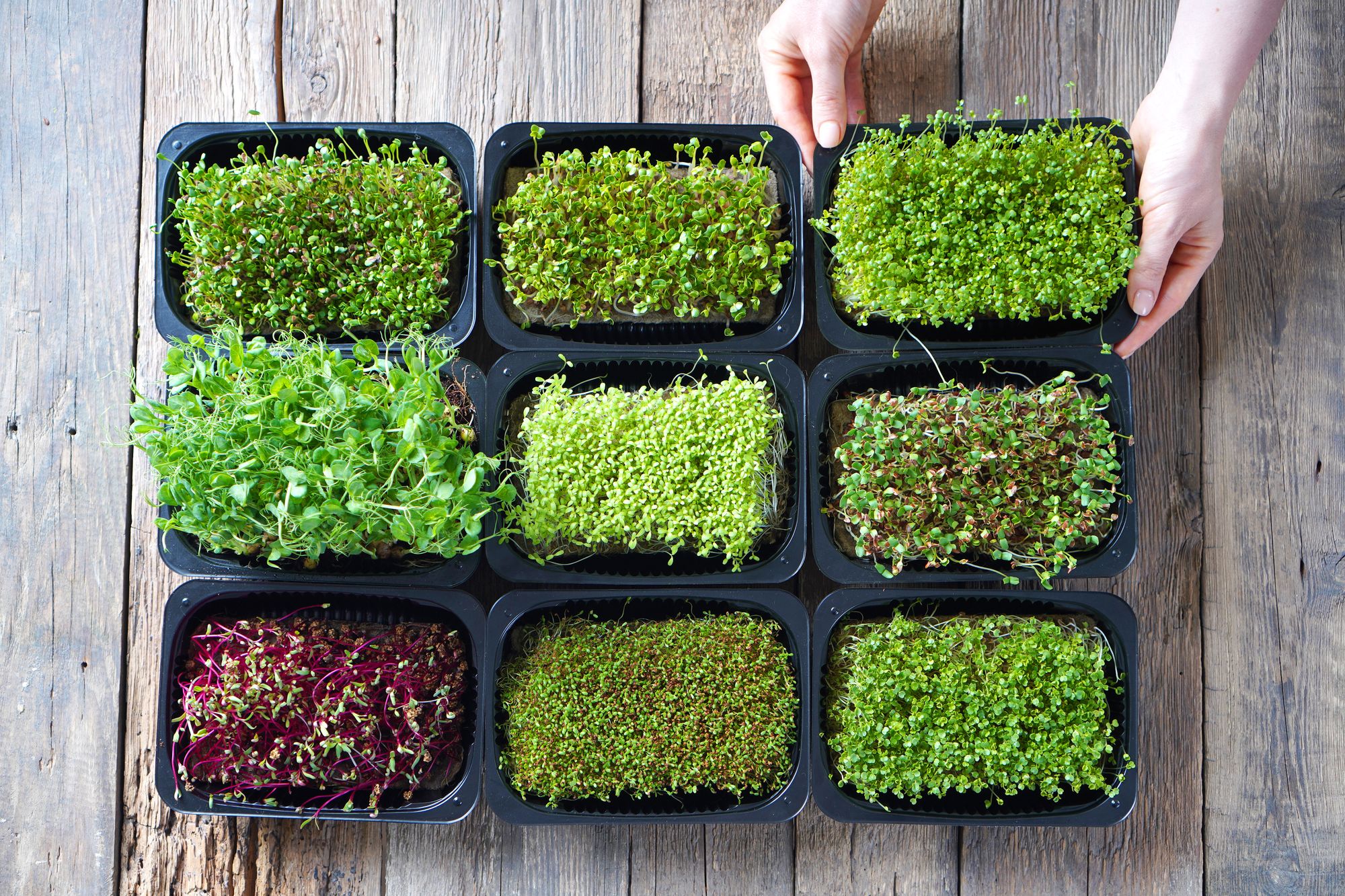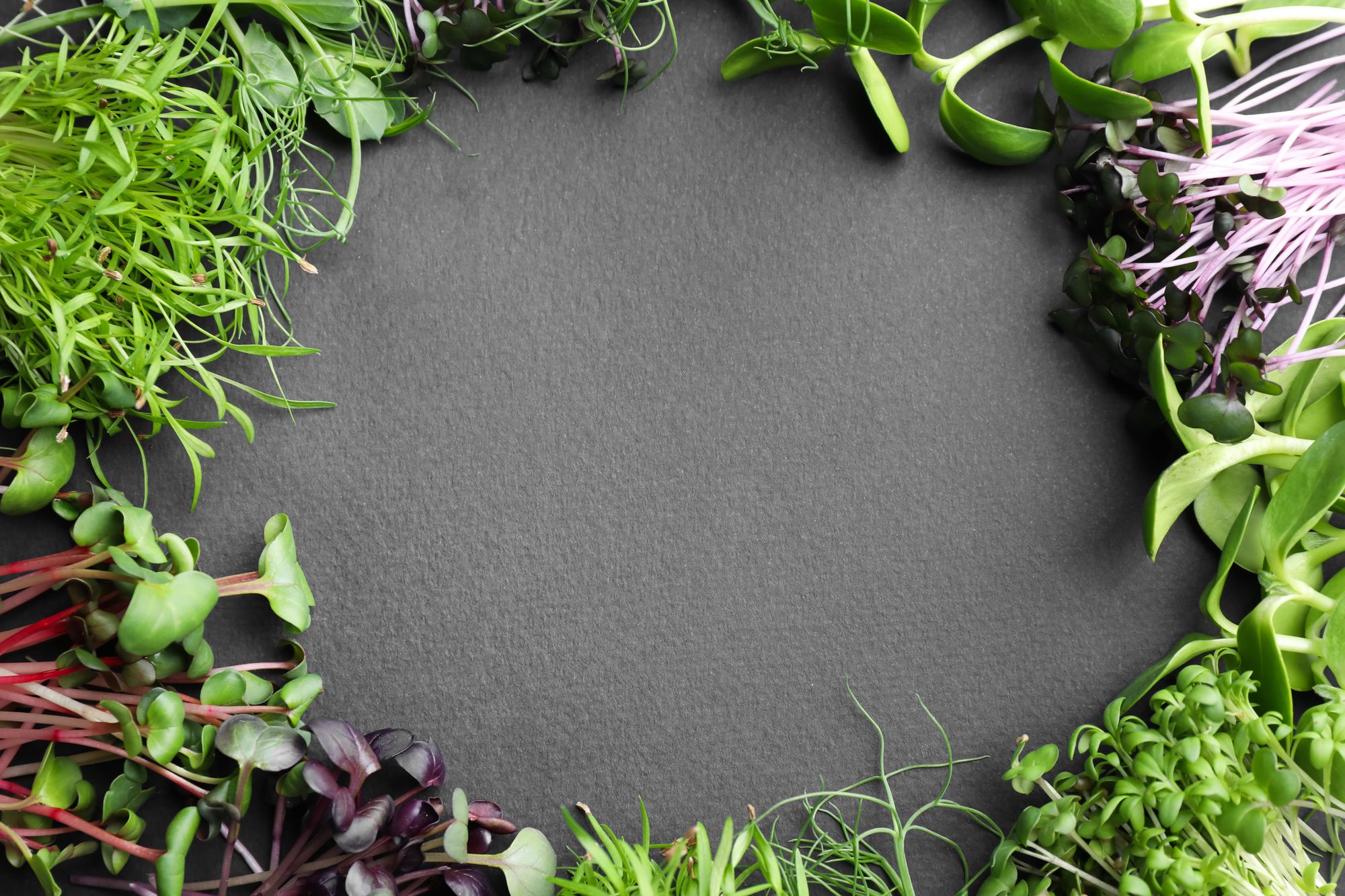Microgreens have become increasingly popular as a flavorful addition to salads or avocado toast, but they are often mistaken for sprouts. According to Healthline, microgreens are more developed than sprouts but not quite as mature as baby greens. They are harvested within 7 to 21 days after the seeds germinate, before they fully mature into adult plants. Microgreens can be grown from a variety of seeds, including radishes, broccoli, arugula, and sunflowers. Not only do these tiny greens add flavor to your meals, but they also offer a range of health benefits. While the specific benefits may vary depending on the seed used, a recent report in the Journal of Future Foods found that microgreens may have anti-inflammatory, anti-cancer, and anti-bacterial properties. Further research is needed to fully understand the nutritional value of microgreens, but dietitians and researchers agree that they are a nutrient-dense food worth adding to your diet. For more healthy eating tips, check out the major effects bananas have on your health.
1) Abundance of Plant Compounds Found in Them

Microgreens have gained attention for their high levels of antioxidants, which can protect cells and promote overall health and disease prevention, according to Amy Goodson, MS, RD, CSSD, LD, author of The Sports Nutrition Playbook. Goodson notes that microgreens have been found to contain more polyphenol antioxidants than many mature greens, making them a valuable addition to any diet. The antioxidant content of microgreens can vary based on the seed used, with broccoli microgreens being particularly rich in antioxidants and minerals, according to a study in Frontiers in Nutrition. Adding microgreens to your meals is an easy and tasty way to incorporate these beneficial plant compounds into your diet and reap their health benefits.
2) Certain Varieties Provide Significant Amounts of Potassium

In addition to their antioxidant content, microgreens can also be a good source of potassium, according to Amy Goodson, MS, RD, CSSD, LD, author of The Sports Nutrition Playbook. "One cup of microgreens provides 10-11% of your daily potassium needs, making them an official 'good source' of potassium," Goodson explains. Since many Americans do not consume enough potassium in their diets, adding a cup of microgreens to a salad or omelet can be a simple way to boost your intake of this essential mineral.
3) Prebiotics Found in Microgreens Provide Gut Health Benefits.

Microgreens contain prebiotics, which are types of fiber that are essential for gut health, according to Morgyn Clair, MS, RDN, author at Fit Healthy Momma. Incorporating microgreens into your diet can be a great way to boost your intake of these beneficial plant compounds. "Many types of microgreens have high levels of prebiotics, which promote the growth of healthy bacteria in the gut," Clair explains. For maximum prebiotic content, she recommends consuming microgreens raw as a salad topping or meal additive. By incorporating microgreens into your diet, you can support your gut health and overall well-being.
4) Abundant Levels of Beneficial Plant Pigments Found in Them

Plant pigments are known to provide numerous health benefits, in addition to giving plants their bright and colorful appearance. For example, carotenoids found in vegetables like carrots and bell peppers have been linked to improved eye and cardiovascular health, as well as a reduced risk of certain cancers. Microgreens, according to a report in Foods, are rich in plant pigments such as carotenoids, chlorophyll, and anthocyanin, which offer a variety of health-promoting properties. Incorporating microgreens into your diet can be a simple and tasty way to increase your intake of these beneficial plant compounds.
5) Trace Metals May Be Present in Them.

While microgreens are generally considered to be a healthy addition to your diet, there is a potential risk to keep in mind. According to a report in Foods, some microgreens may contain trace metals and high levels of nitrates. This is due to the growing sites of many microgreens, which can include areas with heavier human traffic or higher levels of nitrate-rich soil, such as weeded farmlands or the bordered areas of roads or paths. While it's important to be aware of this potential risk, it doesn't necessarily mean you should avoid microgreens altogether. Instead, consider sourcing your microgreens from reputable sources and being mindful of where they were grown.

